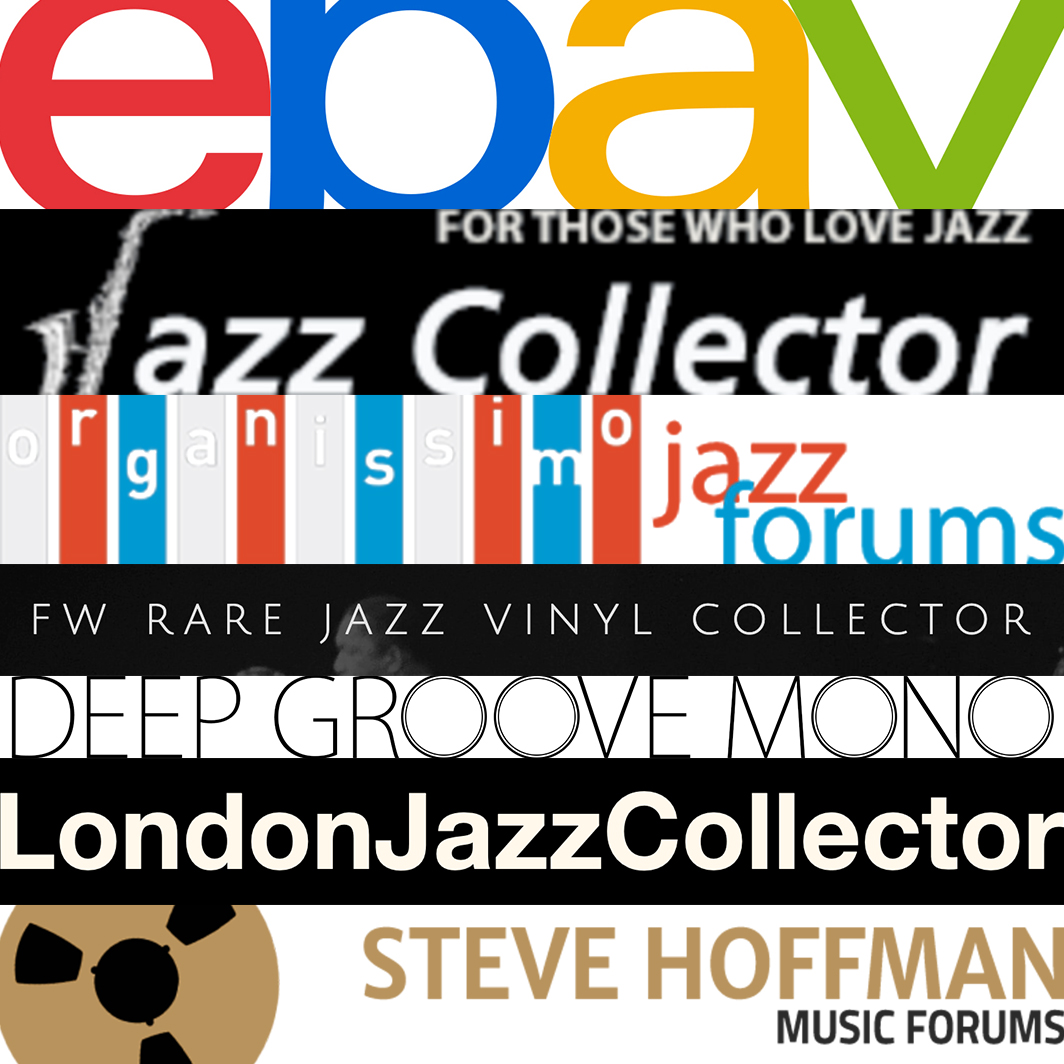 |
In the 1990s, the triumph of the compact disc signaled the end of the LP era and the beginning of a new era in record collecting. Giddy for the quality, convenience, and portability of compact discs, music lovers moved away from analog mediums by the troves. While record stores saw an influx of records, patronage shrunk. This is where eBay stepped in, at the dawn of the Information Age, to help reposition collector markets on an upward trajectory. Suddenly, an original pressing of a rare vintage jazz record like Tina Brooks’ True Blue, which five years earlier would have been placed on the wall of a local shop, was selling to the highest bidder online. Thanks to eBay, high-end collectors from all over the world could now compete for collectible records and values went skyrocketing.
JazzCollector.com
This is the climate under which New York collector Al Perlman became the godfather of online jazz vinyl journalism. Surely there were bulletin boards and mailing lists discussing jazz record collecting before him, but those were private discussions of which today there is no evidence in plain sight of their existence. Perlman, who had been closely monitoring the jazz vinyl action on eBay, launched JazzCollector.com on August 26, 2003. His first post was intended to reassure collectors and dealers that the jazz record collecting hobby was alive and well. To make his point, he included a table of high bids from recent eBay auctions, which included a $1,000 bid for a VG+ original pressing of Sonny Clark’s Cool Struttin’, a $2,400 near mint copy of Tommy Flanagan’s Overseas, and a $1,300 VG+ copy of Jutta Hipp with Zoot Sims. (On a side note, my research has proved comforting; it has reassured me that even twenty years ago I couldn’t afford clean first pressings of holy grails like these.)
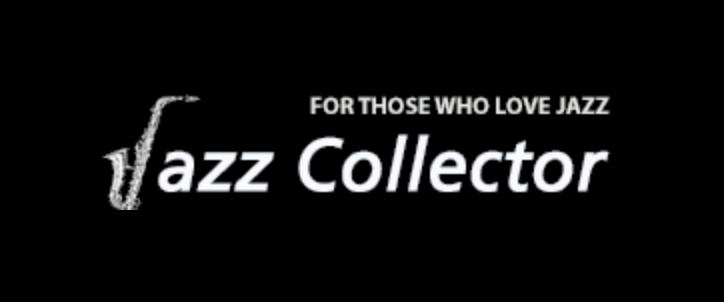 |
Perlman’s first post immediately set the tone for the future of his blog. Today, the conversation at JazzCollector.com continues to center around the latest eBay auctions and the highest bids. Website visitors, which have included veteran collectors like Rudolf Flinterman since day one, regularly discuss current market trends as well as future possibilities.
Visitor comments didn’t come flooding in immediately though. In Jazz Collector’s first year there was rarely a post that garnered more than a few comments. So in May 2004 Perlman began an email newsletter that proved much more successful at sparking conversation. In the months that followed, Jazz Collector took on a rather quirky format where commentary from the host was accompanied by copied-and-pasted email replies to the newsletter.
In 2005, legendary collector Larry Cohn—responsible for much of the content in Fred Cohen’s Blue Note collecting guide—responded to a newsletter that addressed eBay’s effect on the collector market. Cohn firmly believed that the absurd high bids covered by Perlman on his blog were outliers that did not accurately reflect the “true” values of the records, which Cohn believed were in reality much more sensible. Several readers then responded to Cohn’s comments in disagreement, including Perlman. In the end, Cohn’s opposition was right. After 25 years of eBay it’s now clear that the auction site plays a major role in establishing the value of all kinds of collectibles both on and offline.
Despite this lively correspondence with Cohn, JazzCollector.com failed to catch on as a place to discuss collecting in its first two years. As a result, the blog went dormant in 2005. Two-and-a-half years later in January 2008 Perlman began posting again, and in the next few years staple commenters like Dave Sockel, Michel, don-lucky, ceedee, Mattyman, and Dottor Jazz all started making contributions. JazzCollector.com had succeeded at establishing itself as the premier place to discuss jazz record collecting online, and it continues to be a source of lively discussion today.
Organissimo
Also in the early 2000s, a conversation about jazz record collecting began in a somewhat unassuming place. The jazz band Organissimo had created a website with a forum where fans could interact. But by 2004 the forum had taken on a life of its own, becoming a hub for all kinds of jazz-centric conversations, vinyl included.
 |
One of the earliest online conversations about Blue Note originals began in an Organissimo thread titled “Blue Note Sound Quality” on July 16, 2004. Here we see old school collectors including jazz writer Clifford Allen and legendary Los Angeles collector Allan Songer teasing out the details of just what exactly constitutes a Blue Note first pressing. This was six years before Cohen’s Blue Note guide and seven years before London Jazz Collector even existed. The conversation in that thread continued into 2006, then after a one-year lull it reemerged in 2007 with a lively discussion about the new Music Matters reissues and the now-infamous article on the label’s website addressing mono and stereo.
The Steve Hoffman Music Forums
The Steve Hoffman Music Forums were another place were audiophiles and collectors discussed jazz records in the 2000s. The site evolved out of the forums for the audiophile reissue label DCC, which Hoffman mastered for in the ‘80s and ‘90s. Today the Hoffman Forum is the number one place on the internet to discuss anything audiophile-related, and the opinions expressed there have proven to be a trendsetting force in the audiophile industry.
 |
| Steve Hoffman |
Hoffman was perhaps jazz recording engineer Rudy Van Gelder’s loudest critic in those days, and by digging through the forum archives one can find several posts with Hoffman panning Van Gelder. Hoffman was known at the time to repeatedly refute Van Gelder’s claim that he only had a monophonic monitoring setup in his Hackensack home studio during the 1950s. In short, Hoffman felt Van Gelder’s stereo master tapes sounded too good to not have been created with a proper stereo monitoring setup.*
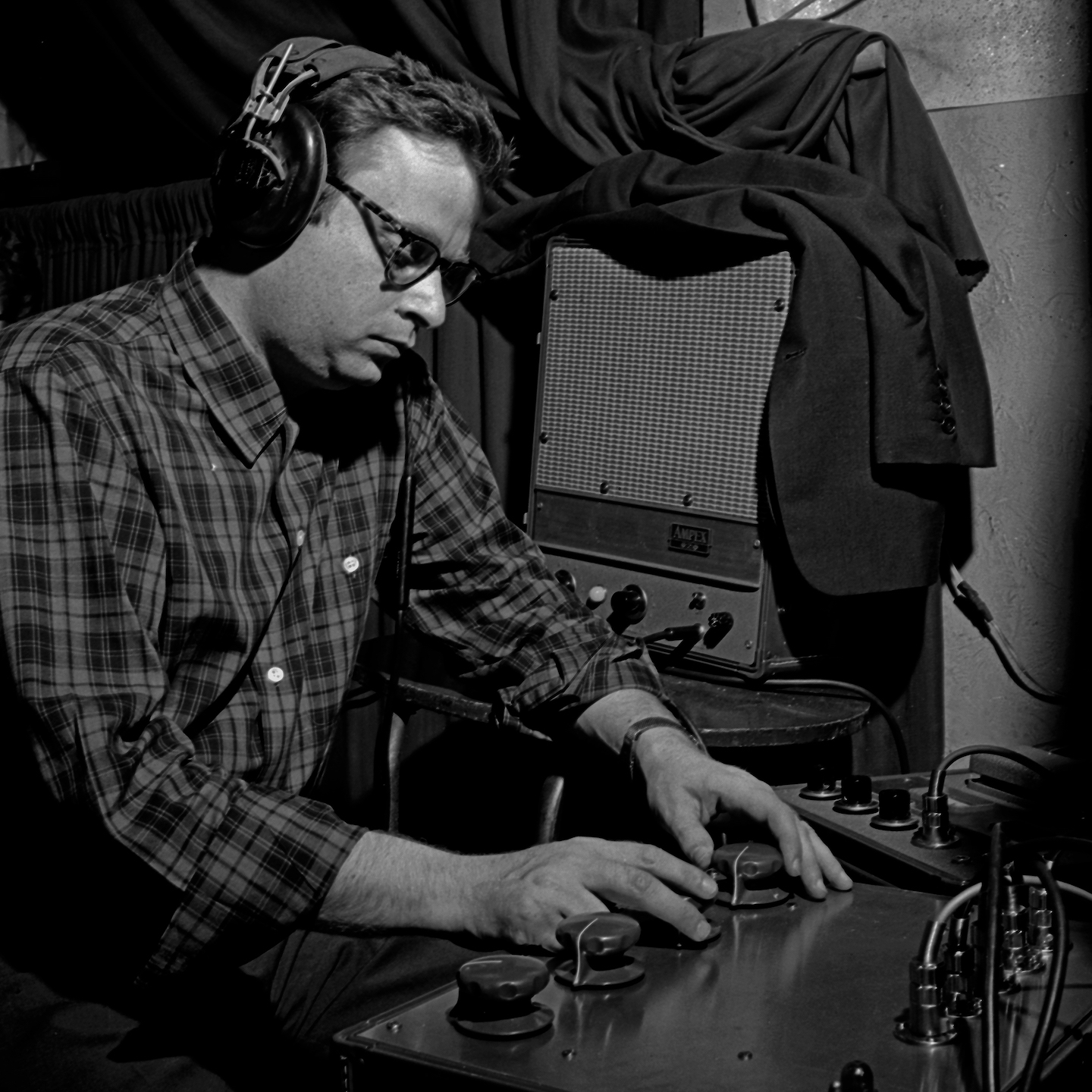 |
| Rudy Van Gelder |
Hoffman had worked with several Van Gelder mono master tapes while remastering Prestige titles for DCC in the ‘90s, but he wouldn’t have heard any Van Gelder stereo masters until he was hired by Music Matters and Analogue Productions in the 2000s. The Music Matters brass—Ron Rambach and Joe Harley—originally planned on doing their Blue Note reissues in mono but were so blown away by the stereo presentation that they decided to focus on stereo instead.
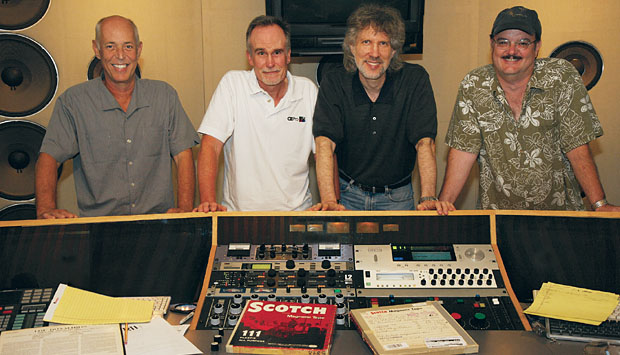 |
| The Music Matters team (L to R): Ron Rambach, Joe Harley, Steve Hoffman, Kevin Gray |
In defense of Hoffman, who in all fairness has relaxed his outspoken opinion of Van Gelder over the years, he was right about the unique value of the stereo presentation of those master tapes. Whether that presentation is objectively superior to the mono is an entirely different matter. But in the following 2007 forum post, Hoffman effectively described the benefits of Van Gelder’s stereo spread:
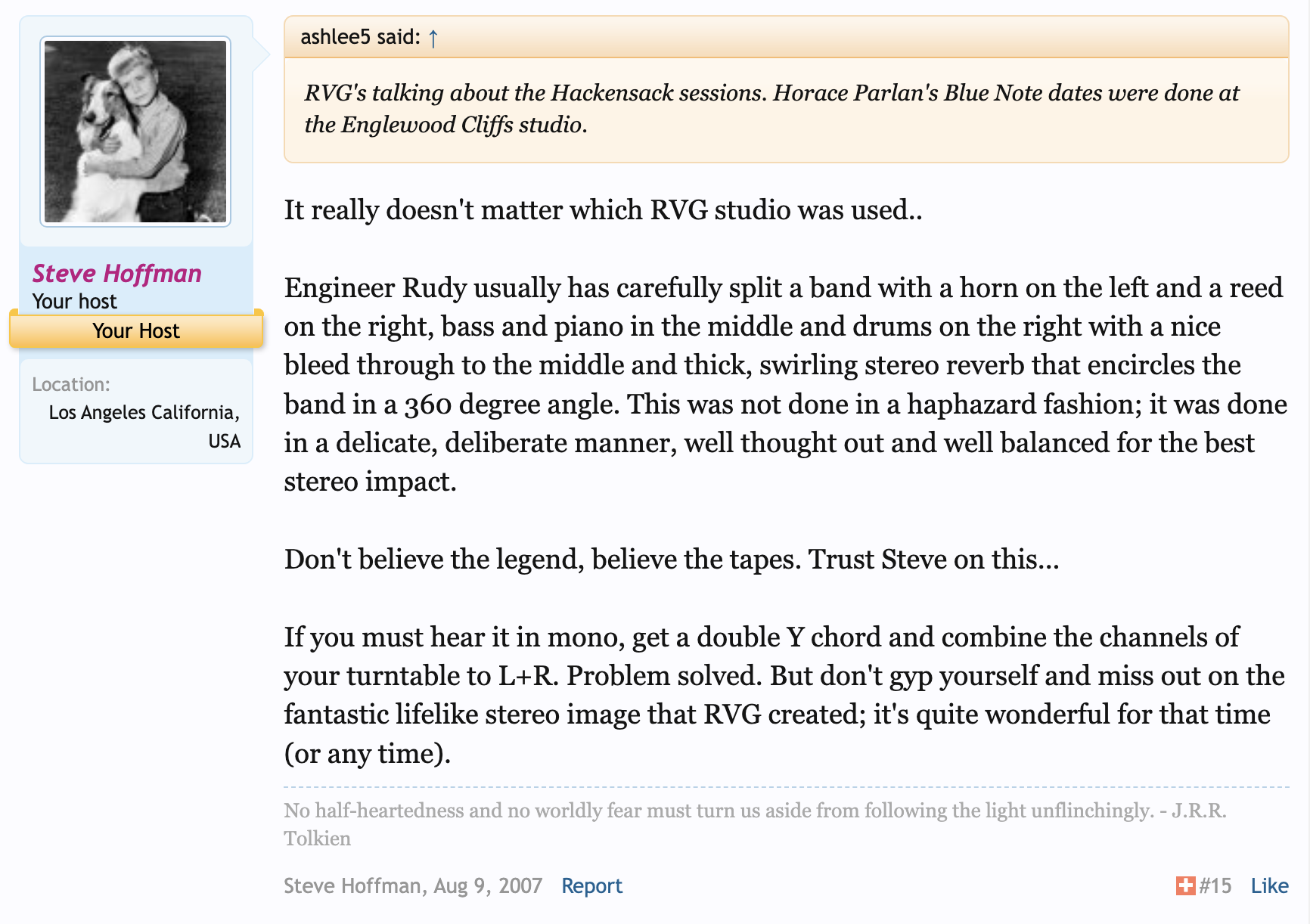 |
| Screenshot of post from Steve Hoffman Forum |
Fred Cohen’s Blue Note Guide
In 2010, Blue Note collecting was turned on its head when Fred Cohen published Blue Note Records: A Guide for Identifying Original Pressings. The guide finally sorted out much confusion about label addresses, deep grooves, and dead wax inscriptions, making it clear what was to constitute a true Blue Note first pressing. It also made it much easier for the uninitiated to make smarter buying and selling decisions, and for better or worse, that helped level the playing field for all Blue Note collectors.
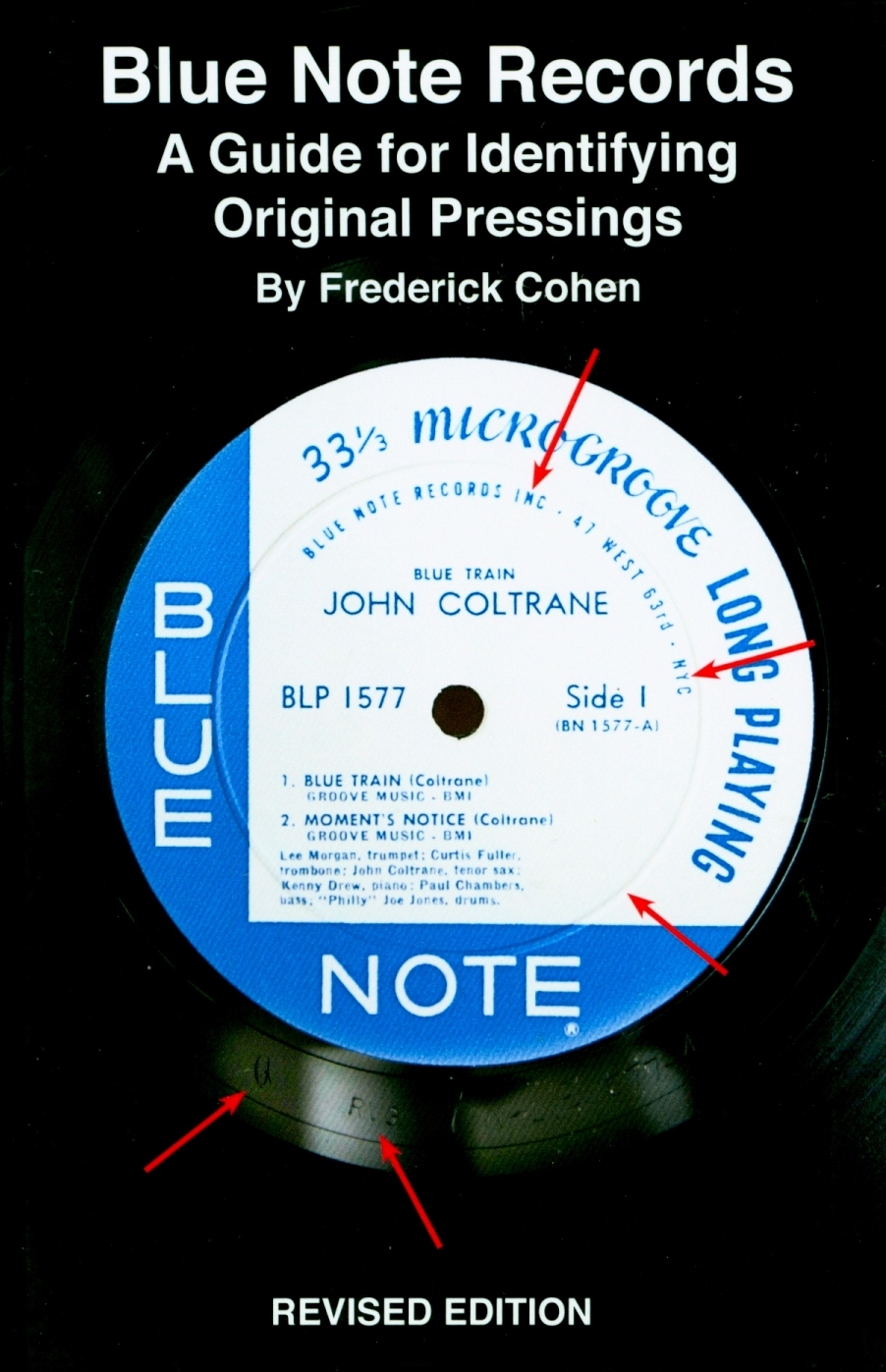 |
London Jazz Collector
When I started getting serious about collecting jazz in 2012, I quickly noticed the wealth of information at the London Jazz Collector website. Little did I know that the site had only been online since August 2011. Its host, the enigmatic “Andy Southlondon”, was a former commenter at JazzCollector.com and had been collecting jazz since 2009:
 |
| Screenshot of comment from JazzCollector.com |
The LJC Blue Note Label Guide has since become the most visited page on the massive LJC site. It is Andy’s seminal work, a valuable piece of original collector research, and the site now houses similar guides for many other jazz labels. But before Andy published his findings in 2012, he was linking JazzCollector.com readers to a flickr account featuring hi-res images of his Blue Note collection. Here we get a glimpse of the blogger putting together the idea for what would eventually become his Blue Note Label Guide.
 |
Twelve years since its launch, London Jazz Collector has over six million page views. It is by far the most popular jazz record collecting website online, and Andy continues to create content laced with his patented British wit.
FW Rare Jazz Collector
In 2013, several years before Instagram became a well-known place to share one’s record collecting experience, a Swedish collector named Fredrik Wellner started posting pieces from his small but impressive collection of rare jazz LPs on Tumblr. I remember seeing his beautiful, clean first pressing of Lee Morgan’s Candy on that site. I was in awe and incredibly jealous. Then in 2015 Fredrik migrated to Squarespace and launched his FW Rare Jazz Collector website, where he remains active sharing new additions to his tightly curated collection of original pressings.
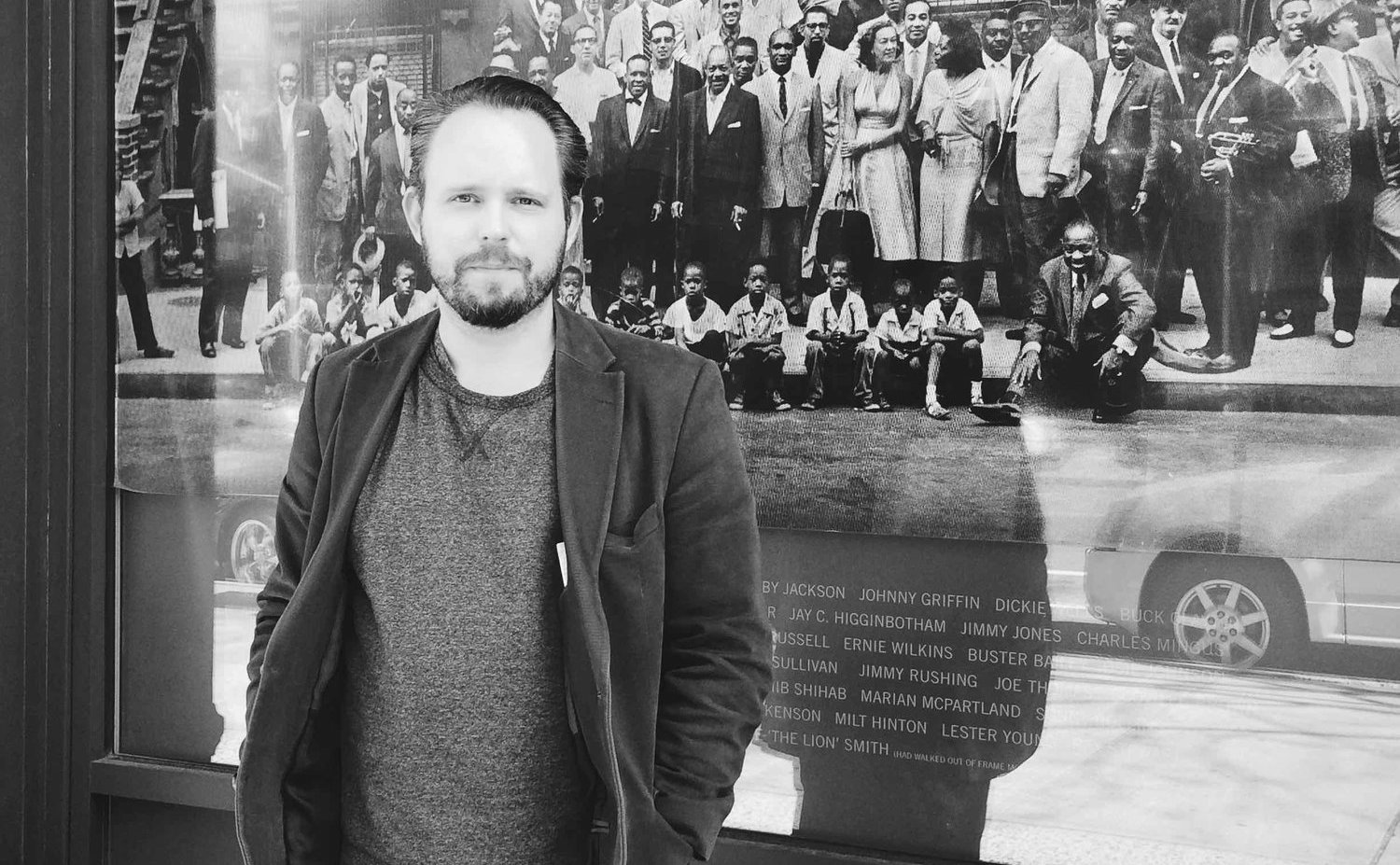 |
| Fredrik Wellner a.k.a. FW Rare Jazz Collector |
A Passion for Mono
My own adventure collecting jazz began in 2009. I bought the Blue Note Cover Art book, and on a subsequent road trip I unearthed an original pressing of Finger Poppin’ with the Horace Silver Quintet. Sandwiched between a vertically stacked pile of records in a dusty old New Orleans record store, the condition was VG- and it didn’t sound that great. Soon after, I discovered the Music Matters mono-stereo article, which led me to (erroneously) conclude that the stereo originals represented the authentic sonic vision of Blue Note’s producer (Alfred Lion) and recording engineer (Rudy Van Gelder). So I overpaid for an overgraded original stereo pressing of the same title on eBay, which ended up being in VG condition with crackle and ticks all over.
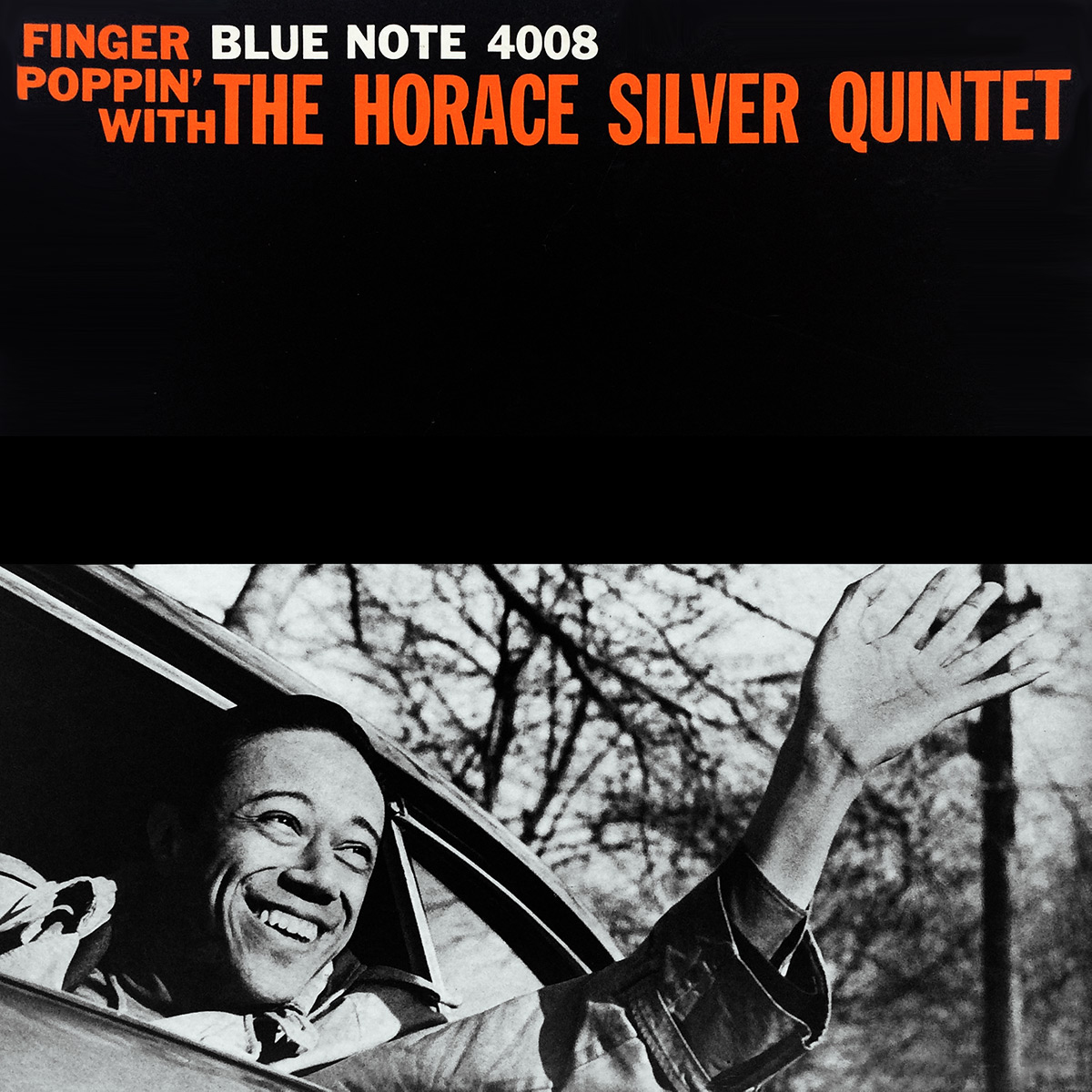 |
My enthusiasm for vintage jazz collecting had been seriously deflated. Then in the fall of 2012 I got inspired to try collecting original Blue Notes again. I bid on a couple VG records on eBay and won, but they also didn’t sound so great. Then a month later I finally found a clean mono original pressing of a Blue Note album (Blue Mitchell, The Thing to Do) at A-1 Records in New York City. Once I got the chance to listen, I finally felt like I understood what all the hype was about.
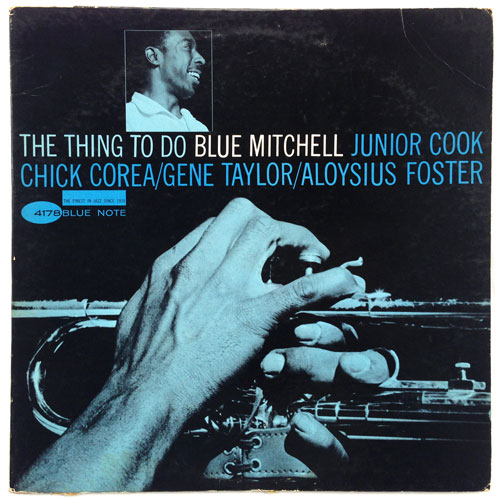 |
One week prior I had broken my internet silence in the comments section for the LJC Blue Note label guide. Looking back, I find my comment interesting because I reference the Music Matters mono-stereo article in an effort to show that the stereo pressings were more “authentic” than the mono LPs:
As with Beatles recordings, I prefer to listen to the mixes that the mixing engineer took the greatest care in producing. According to this article, that is clearly—from recording sessions after October 1958—the stereo mix (also note that, for recording sessions between March ’57 and October ’58, Van Gelder produced both an original mono *and* stereo mix).
I don’t like the idea of listening to a mono mix that is no more than a fold down of the stereo one. I would not, however, rule out the possibility that those still sound good; the “glue” of a mono mix does produce a desirably “strong” sound.
I remember carefully comparing my original mono and stereo copies of Finger Poppin’ around this time, and while I couldn’t deny the exciting level of detail in the stereo LP, the mono simply had that “glue” and just sounded more “right” to me. On the aforementioned trip to NYC I also picked up Cohen’s Blue Note guide and was astonished to read a quote from Rudy Van Gelder explaining that all sessions under Alfred Lion’s supervision were actually monitored and mixed in mono. Still a little unsure of Van Gelder’s process, I reached out to Kevin Gray, who patiently explained that there was no tape generation loss in the creation of the mono master lacquer disks. So the mono masters were not sonically inferior to the stereo masters, and—personal preference aside—mono was clearly the focus in the studio when Blue Note’s classic albums were made.
I was excited about my detective work. I felt that the Music Matters article was written in a way that was intended to make their preference for stereo appear more “authentic”. They didn’t lie, but (perhaps naturally) they left out what I felt was an important detail. So I took to the Hoffman Forum in an effort to enlighten other members. If I’m being honest, I probably came across as pretty obnoxious at that time. I hadn’t learned Netiquette yet and typed way too much in ALL CAPS.
My next crusade took place in the comments section of a December 2012 LJC post about Liberty pressings of Blue Note albums, where I responded to comments made by the notorious eBay seller Bob Djukic among others. Bob was arguing in favor of the mono mixes but had the details wrong, and as long-winded as Bob was, I could be even more so at that time (this was before he became the sole occupant of “LJC purgatory” for his insufferably long comments). Again I attempted to school everyone on what I had learned and had a lot more than a mouthful to say.
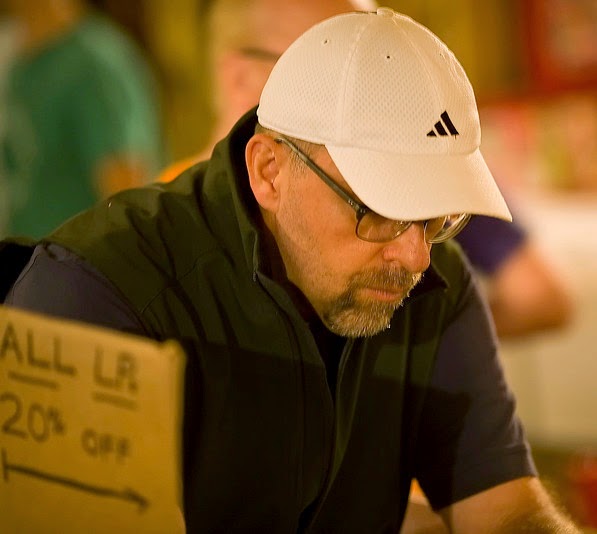 |
| Bob Djukic |
I wasn’t the first person to bring these facts about the mono mixes of Blue Note albums to the Internet’s attention, though. Back in April 2011 Hoffman Forum member crispi (now a good friend of mine) shed light on the controversy in a forum thread about mono and stereo Blue Notes. Cripsi argued the same points I did but did so a year and a half earlier.
Deep Groove Mono
In late 2012 I reached out to LJC to ask him if I could create a guest post on his site addressing the Blue Note mono-stereo controversy, to which he agreed. I had also been thinking about creating my own jazz collecting blog for a while. So I asked Andy to link from his site to mine once my article was live. He agreed, and my first online publication, “How They Heard It: Blue Note Records and the Transition from Mono to Stereo” went live on the LJC site in early 2014 alongside the launch of Deep Groove Mono. My first post was for an original pressing of Sonny Rollins’ A Night at the Village Vanguard, which I coincidentally bought from Al Perlman at the WFMU Record Fair in New York City a few months prior.
First Pressing Frustrations
By January 2013 I had added about a dozen Blue Note originals to my collection, though I had also returned and resold just as many. The nagging, unwelcome theme was how difficult it was to find originals that sounded good. Even most of the copies I kept had their share of small issues. I remember doing an A-B comparison of my original Finger Poppin’ LP with my RVG Edition CD. When it came to high-frequency detail, there was no contest: the CD was the clear winner.
 |
| My collection of mono Blue Note originals circa 2013 |
That month I started a thread on the Hoffman Forum titled “Does Hot Vinyl Mastering Increase the Chances for Distortion?” The issue wasn’t so much with surface noise but distortion from groove wear. This was something new to me. While I had previously only collected stereo records dating back to the late ‘60s, it turns out that groove wear is much more common with mono LPs from the ‘50s and early ‘60s. Eventually I felt I had to share my experience with the readers of my blog, and a year later I published the article “Groove Wear: The Elephant in the Record Store”. Kevin Gray graciously proofread the piece for me, which just so happened to start a fruitful friendship that continues to this day.
By mid-2015 the comments sections for London Jazz Collector posts were getting pretty long. Regulars like Alun Severn, Gregory the Fish, Felix Strange, and GST were contributing so much that I asked Andy to create a separate forum for us to go off-topic. Soon after, I began work as an administrator for the new LJC Forum. It was here that I started to hear murmurs of what a great place Instagram was to share content, talk about jazz vinyl, and even buy records. By the time I joined in 2018, Clifford Allen (@tallswami), Chris Brown (@what_can_brown), DJ Pari (@djpari_), Jim R., (@jrock1675), Gregory the Fish (@jazz_peasant), and GST (@gstvinyl) all had active accounts. I was a little late to that party but I’m glad I eventually made it, and I continue to be an active user today (@dgmono).
YouTube
YouTube was another virtual party I was late to. Ken Micallef and The In Groove’s Mike Esposito started their own respective channels back in 2017, and today they have the subscribers to prove their pioneering status. Norman Maslov a.k.a. Mazzy followed shortly after in 2018, and Michael Ludwig a.k.a. 45 RPM Audiophile quickly rose to prominence in 2020. I didn’t start producing original content until 2021 when I launched my series Record Collector Confessions, but I continue to enjoy making videos and sharing them on my YouTube channel.
Conclusion
Record collecting has gone through some dramatic changes in the Information Age. Beginning with the rise of eBay and a consequential rise in values, it took some time but eventually the collector community figured out how to harness the massive power of the world wide web. This accelerated the sharing of information in way that made it much easier for newcomers to educate themselves and get caught up to speed with more experienced collectors.
After surveying this history, it’s clear that there was a surge in collector activity around 2010. I can’t say I see a complementary rise in values at that time but there definitely was an explosion of unprecedented knowledge being shared. As far as prices go, and in addition to the increases caused by eBay in the late ‘90s, there also appeared to be a spike in values occurring around the time of the Covid lockdowns, which I hypothesize had something to do with a rush of new collectors to the hobby, seasoned collectors having more time to collect, and inflation. Today, Instagram and YouTube are the preferred mediums to interact with other collectors online, and though blogs have seen a decline in popularity, many forums are still alive and well.
* There is still no hard evidence as to whether Rudy Van Gelder had stereo monitoring capabilities at Hackensack. To Hoffman’s credit though, there is still one unsolved Hackensack mystery, that Van Gelder did in fact cut stereo masters there in 1958 and 1959 before he moved to Englewood Cliffs. Could he have done that without stereo monitors? In theory, yes, but we still can’t be sure if he did or didn’t.

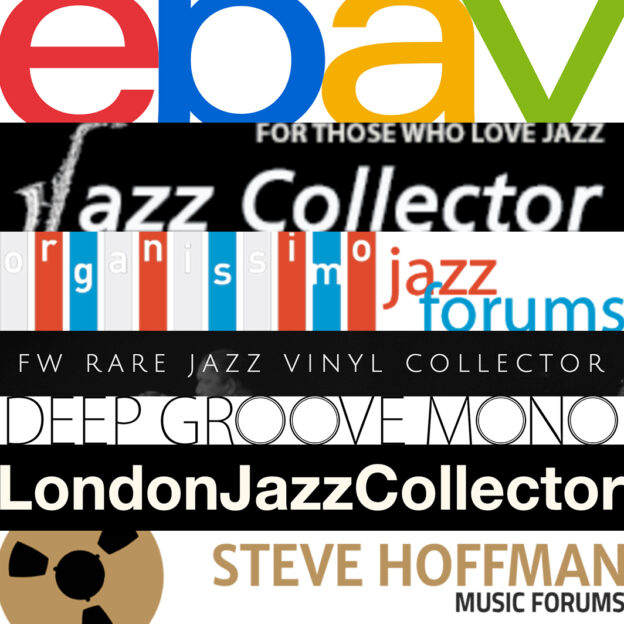
Damn Rich. Certainly worth the wait between blog posts.
Thanks Dave! Posting when inspiration strikes has worked well for me. I also don’t have the same amount of free time as bloggers who are retired. I’m still working a full-time gig on top of all this collecting madness!
Interesting article. For what it’s worth — and maybe that isn’t much — the organissimo forums went up around the time the Blue Note Bulletin Board was closed. The BNBB was shut down after Norah Jones was signed to the label, and new Blue Note Records customers posting about Norah on the board were roundly met by saltiness. Most of the veteran BNBB posters (myself included) went to organissimo, which is a great resource all these years later and run at a huge financial loss. I’m hopeful it can keep on going. Record collecting is a teeny tiny part of the forums’ content — the boards are mostly focused on the broad spectrum of music known as jazz. Most of what I have learned that is not gleaned from musicians I’ve interviewed or printed matter I’ve read comes from the organissimo board.
I miss the Organissimo forum; I was active on it for a few years anyways and even created a Blindfold test at one point. Then I just got sort of busy with life..wife & kids etc. I found out about IG a bit late in the game. Even though I started collecting records in the late 80s I didn’t really get into jazz more seriously until the early to mid-90s. Coming from a punk background I started with free jazz and slowly made my way backwards. Definitely had no clue in the 90s about what constituted a first Blue Note pressing but by the early 00s I started to meet older local collectors who gave me a lot of great info.
you should come back over there! It is a fun place quite often.
Ah, yes, I forgot about the BNBB! I was also trying to remember if there was some sort of popular Yahoo or Google group in the late ’90s or early 2000s…?
Very interesting run through the Information Age re Jazz/Blue Note collecting – what about prior to the Information Age? In the U.K. the key to knowing all of the Blue Note pressing variations in the 80’s and 90’s was to befriend an original ‘modernist’ and pick their brains.These guys could be encountered at record fairs and were very often musicians,club promoters or DJ’s who collected Blue Note at the time of release(or shortly after and thereafter).They were the sort of guys who saw Tubby Hayes play live at the Flamingo and dressed like Big John Patton. A lot of them played sax. They bought the stuff on import or on trips to New York. Once you had cracked the Blue Note pressing ‘code’ it was like joining a secret society! From a collecting point of view you were in a very strong position. This market advantage lasted a long time, pretty much until the ‘cheat sheet’ came along. Just a couple more comments, the OG Blue Note collectors swore by MONO- they ditched Stereo copies pronto or never collected them- as Mono BN had ‘ the Sound’! I vividly remember a fair when one dealer had a box of NY BN all priced at £100 each – this caused uproar at the fair as nobody had ever seen such prices- now look what’s happened! Please forgive my late night ramblings- great stuff Richard.
I started buying original jazz records in the mid/late ’90s so some of these codes were not completely cracked yet. And with incomplete information in the price guides, sometimes (often) you got lucky with underpriced originals in stores. Or, you could make friends with a shop owner by educating them about what they had — then you’d get first crack at some of the nice collections that came through. All of that is a memory now, however.
Thanks Clifford.I agree, it was more of an organic process back in the day.You were a lot more reliant on your people skills (or lack of !) plus old school research in books and magazines. I jumped from Chicago Blues to Jimmy Smith in my early 20’s and the Blue Note bug had me. Pathe Marconi and Manhattan reissues were the cheap and accessible gateway into the label and the music in the mid 80’s . Then came the search for originals. Forty years later I am still hooked on Blue Note and the rest of the world has caught on big time.
Yeah Nick, Blue Note’s collectability ain’t goin nowhere. Those records are a perfect storm of musicianship, production, engineering, manufacturing quality, and artwork. I think I get why classic jazz wasn’t “cool” (popular) for a few decades. Well it sure is now!
I remember the Goldmine guide had very generic listings for Blue Note albums. For example, anything released in the Lexington era also had a price for W63 deep groove, W63 no deep groove, NY etc.–regardless of whether or not all those pressings existed for a particular album.
And weren’t they all valued at like $30-50? Those were the days.
Thanks for the thoughtful comment, Nick 🙂 Indeed I am very interested in the history of collecting, all the way back to the ’70s for sure. (An interview project might be in the works.) Also, I love hearing stories about the days before I started collecting. It’s cool hearing how the older collectors preferred mono, and strictly for the *sound*, not necessarily because the mono copies were rare or special, as that is surely part of their appeal today with all the stereo reissues out there.
Terrific post, thank you. There’s also a growing community on TikTok where many new and younger jazz-curious folks are finding out about our niche’s artists, albums, pressings, collecting, stores, stories, and personalities. It’s encouraging to see, and also great that fans/collectors have a range of options from which to choose where they receive their news–long-form blogs and forums continue to have their place, as do newer social media and video platforms. Please keep up your great work!
Interesting, Syd! And nice to see you over here in “blog land” ha
Great post, Rich.
Thank you!
Wonderful article. I recognized many of the collecting points. I myself has always been a stereo collector guy. I just think stereo is so cool and clever most of the time. I have for the most part been a “mole” collector and not have had the urge to show the world what I bought. I’ve posted some on Insta and Facebook but not much. Maybe I kind of miss som info about Discogs and Popsike in your article but maybe they have not been important for you?
Yes, Facebook, Discogs, and Popsike were some sites that I considered mentioning. I was concerned that the article might be misinterpreted to be more about *buying* records online than *discussing* record collecting online (especially because of the title), and the article is meant to be a survey of the latter. In light of this, Facebook deserves an honorable mention. I rejoined Facebook to check out some of the jazz collector groups on there but decided to omit them in this article since it was all so new to me.
Nice summary, Rich. I eventually found my way to most of the destinations you mentioned, save for Instagram. My early stumbles in collecting I shared on Reddit, which gets no mention in your account. I also shared finds on quieter FB groups, as Ken’s tone and moderation approach weren’t always to my liking.
I read a lot of the archived organissimo.org posts, and I just finished reading the entire history of what remains of Al’s site (it took me from July until today to finish).
My collecting started 4 years ago, and it accelerated during COVID. I have slowed down as, like you, I have realized that serious collecting is out of my financial reach. I have about 1,500 jazz records now – mostly rescues from dollar bins and beginners luck.
I’ve enjoyed learning from the entire community, although I almost exclusively color within the hard bop lines.
Thanks for sharing your journey and experiences, including your discomfort and uncertainties.